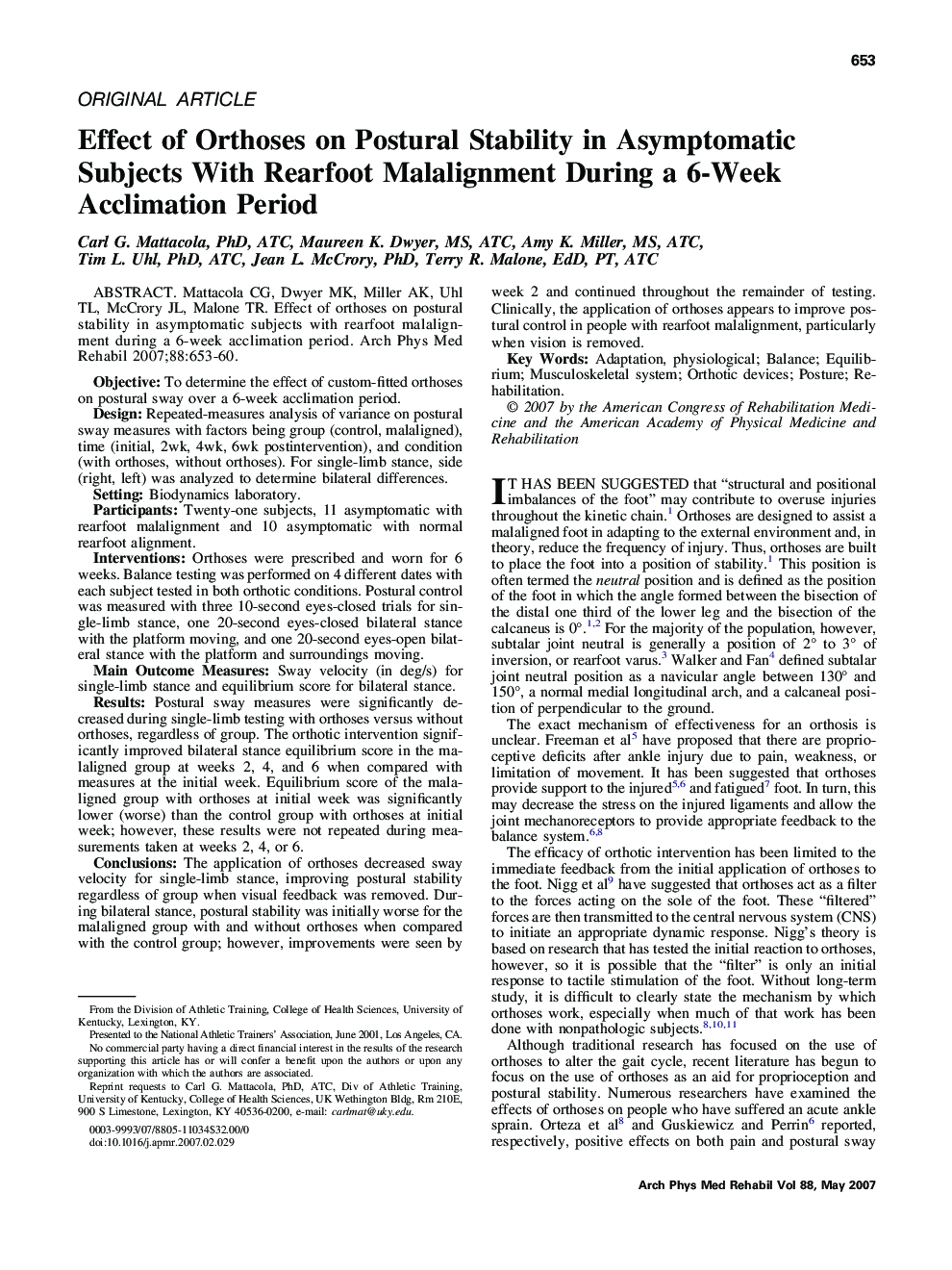| کد مقاله | کد نشریه | سال انتشار | مقاله انگلیسی | نسخه تمام متن |
|---|---|---|---|---|
| 3452921 | 1595793 | 2007 | 8 صفحه PDF | دانلود رایگان |

Mattacola CG, Dwyer MK, Miller AK, Uhl TL, McCrory JL, Malone TR. Effect of orthoses on postural stability in asymptomatic subjects with rearfoot malalignment during a 6-week acclimation period.ObjectiveTo determine the effect of custom-fitted orthoses on postural sway over a 6-week acclimation period.DesignRepeated-measures analysis of variance on postural sway measures with factors being group (control, malaligned), time (initial, 2wk, 4wk, 6wk postintervention), and condition (with orthoses, without orthoses). For single-limb stance, side (right, left) was analyzed to determine bilateral differences.SettingBiodynamics laboratory.ParticipantsTwenty-one subjects, 11 asymptomatic with rearfoot malalignment and 10 asymptomatic with normal rearfoot alignment.InterventionsOrthoses were prescribed and worn for 6 weeks. Balance testing was performed on 4 different dates with each subject tested in both orthotic conditions. Postural control was measured with three 10-second eyes-closed trials for single-limb stance, one 20-second eyes-closed bilateral stance with the platform moving, and one 20-second eyes-open bilateral stance with the platform and surroundings moving.Main Outcome MeasuresSway velocity (in deg/s) for single-limb stance and equilibrium score for bilateral stance.ResultsPostural sway measures were significantly decreased during single-limb testing with orthoses versus without orthoses, regardless of group. The orthotic intervention significantly improved bilateral stance equilibrium score in the malaligned group at weeks 2, 4, and 6 when compared with measures at the initial week. Equilibrium score of the malaligned group with orthoses at initial week was significantly lower (worse) than the control group with orthoses at initial week; however, these results were not repeated during measurements taken at weeks 2, 4, or 6.ConclusionsThe application of orthoses decreased sway velocity for single-limb stance, improving postural stability regardless of group when visual feedback was removed. During bilateral stance, postural stability was initially worse for the malaligned group with and without orthoses when compared with the control group; however, improvements were seen by week 2 and continued throughout the remainder of testing. Clinically, the application of orthoses appears to improve postural control in people with rearfoot malalignment, particularly when vision is removed.
Journal: Archives of Physical Medicine and Rehabilitation - Volume 88, Issue 5, May 2007, Pages 653–660